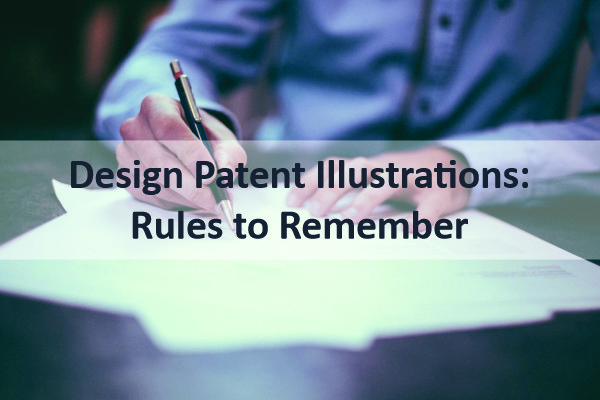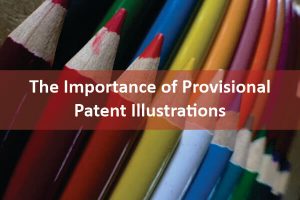Design patent Illustrations protect the structural and ornamental appearance of a product as it appears to the eye of the consumer. Furthermore, for design patent applications, the drawings themselves are the claims. So, it means that it is the drawing’s job to visually and precisely define the extent of the novel design. Design patents also come to use to depict original and ornamental design embodied to an article of manufacture. The design patent illustrations primary purpose is to aid the patent examiner to understand the appearance and aesthetics of the product. Hence, one may call the special artistic skills to show the shape, contour and texture of the invention.
Design Patent Illustrations: Key Rules
Design patents mostly come to use to protect new designs of jewellery, furniture, containers of beverages, processed food and computer icons. Hence, one does not need reference numbers in design patent illustrations. The grant period for design patents is 14 years, during which the inventor has exclusive commercial rights over the design.
Drawing Format
One needs to figure design patent illustrations in black-and-white line drawings. Also, special attention should be given to any surface shading to show the character of all surfaces of any three-dimensional aspects of the design. So, one should use broken lines to depict portions that form no part of the claimed design. You can also fill black-and-white photographs in lieu of ink drawings if the photographs are the only practicable medium for illustrating the invention.
Related Article: Patent Search Types: ‘The Major Eight’
Colour Drawings or Colour Photos
If an applicant seeks to file colour patent drawings or colour photographs in lieu of black-and-white drawings one needs to file a petition. Also, the petition should explain why the colour drawings or photographs are necessary. The petition must include the petition fee, three sets of colour drawings or photographs, and the specification must contain the following language:
“The patent or application file contains a least one drawing executed in colour. Also, the office provides the copies of this patent or patent application publication with colour drawings upon request and payment of the necessary fee.”
Required Views
Design patent illustration requires views which include a front, rear, right side, left side, top and bottom. Also, one can add perspective views since they can be so helpful in showing the appearance, depth and shape of three-dimensional designs.
Related Article: What is Comprehensive Trademark Search?
Duplicate Views
One can also add views that are merely duplicates or mirror images of other views of the design. For example, let’s say that the left and right sides of a design are identical or a mirror image. Then, you can provide a view of one side. Also, add a statement made in the drawing description that the other side is identical or a mirror image. The statement may be “the right side elevation view is a mirror image of the left side”. Also, if the bottom is flat and includes no ornamentation, one may omit that view if the figure descriptions include a statement explaining the view. Hence, one should NOT use “Unornamented” to describe visible surfaces that clearly are not flat.
Surface Shading
This is one of the most important rules of the design patent illustrations. US patent laws require the design drawings to include appropriate surface shading. Also, they clearly show the character and contour of all surfaces of any three-dimensional aspects of the design. Surface shading is also necessary to distinguish between open space and solid areas. Furthermore, the lack of appropriate surface shading may result in a non-enabling rejection which may be difficult to correct.
Design Disclaimers
The USPTO does not allow written disclaimer statements in issued design patents. But, they temporarily allow it in a pending design application to enable future amendments. Therefore, the most effective way to avoid claiming a particular design feature or element is to show such a feature in broken lines.
Broken or Dashed Lines
Sometimes it’s helpful to show the context of a design without actually claiming the surrounding environment. So, one can use broken lines in such circumstances to indicate that whatever is shown as such forms no part of the claimed design. Some foreign countries, such as China, do not allow for broken lines in design patent applications. So, whatever is shown dashed in a US design application may ultimately have to be shown as solid in a foreign design application.
Why Choose Us? – Patent Illustration Express
It is very important for one to protect his invention and avoid patent infringement. If you are looking for any assistance regarding design patent illustrations, Patent Illustration Express (PIE) will guide you with the whole process. PIE is a team of professional patent illustrators, who boast years of experience in creating illustrations. We provide our clients with a super-fast delivery of the illustration services. Our team creates illustrations that have 100% compliance with the USPTO regulations. PIE provides flexible output formats for our clients with a full satisfaction guarantee. We make sure to cover a descriptive invention of our clients through illustrations. For more information, Visit Patent Illustration Express.



